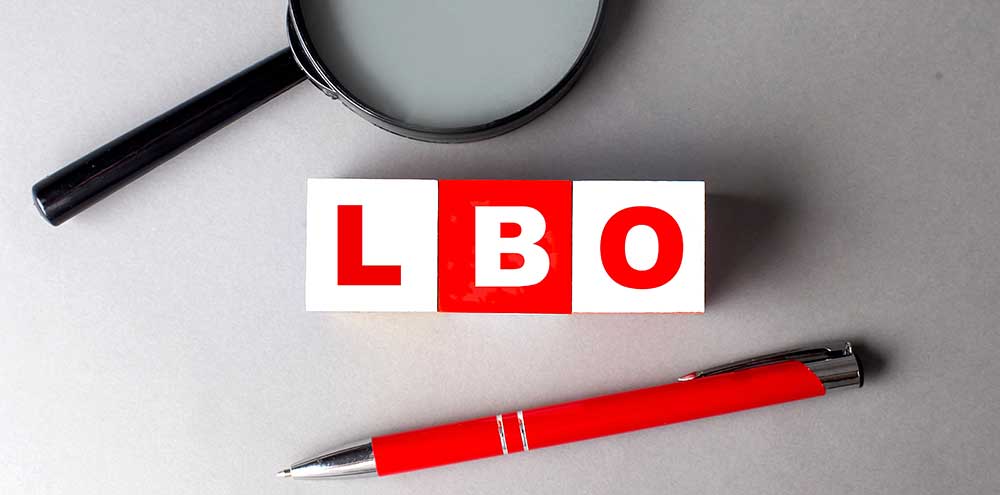In the rapidly evolving world of finance, mergers and acquisitions (M&A) continue to play a pivotal role in reshaping industries and redefining business strategies. As 2024 dawns, Goldman Sachs’ Chief Credit Strategist, Lotfi Karoui, offers a fresh perspective on the changing landscape of leveraged buyouts (LBOs) that is poised to set a new precedent in the M&A space.
The LBO Resurgence
A leveraged buyout typically involves acquiring a company using significant borrowed funds. These borrowed funds are typically secured against the assets of the company being acquired. Over the years, the nature and structure of LBOs have transformed in sync with global financial trends and market dynamics.
According to Karoui, 2024 is on track to witness a resurgence of the traditional LBO structure. This shift is propelled by the confluence of record amounts of “dry powder” (unallocated capital) in the hands of private equity firms and an increasing inclination to finance deals with a higher proportion of equity and cash.
Changing Transaction Dynamics
However, the modern LBOs projected for 2024 might slightly deviate from the debt-laden behemoths of yesteryears. Given the persistent high leverage costs, Karoui envisions future deals to be sculpted with reduced debt. This strategy mitigates the risks associated with hefty debt loads and provides a firmer foundation for the acquired entity’s long-term growth and stability.
Karoui articulates this transformation succinctly: “We’re reverting to the essence of what an LBO has always symbolized. You acquire a mature enterprise, optimize its operations, and transition it to an IPO within five to seven years.”
Private vs. Public Debt Markets
With global financial markets in a state of flux and with heightened funding costs, private markets stand at a crossroads. When quizzed about the prospective performance of private markets compared to public debt markets, Karoui quickly emphasizes the intricacies at play.
For one, the escalating costs of capital in recent times indicate that businesses might struggle to counterbalance these costs with robust earnings growth. This phenomenon presents a unique challenge, especially in the wake of interest rate hikes and subdued earnings projections.
However, institutional investors’ interest in private debt remains unabated despite these challenges. As per Karoui’s insights, the allure of private credit lies in its potential to deliver superior risk-adjusted returns compared to volatile public markets. The relatively stable nature of private debt and its appeal to buy-and-hold investors such as insurance firms, pension plans, and family offices underscores its sustained attractiveness.
Dry Powder and its Deployment
The recent data from PitchBook highlights the exponential growth of the private debt market, which surpassed $1.5 trillion in 2022. With a staggering $434.4 billion in dry powder, the question on everyone’s mind is: Will this capital be channeled into a wave of LBOs and M&A activity in 2024?
Karoui remains cautiously optimistic. He believes that with renewed confidence in the Federal Reserve’s ability to ensure economic stability, there should be a palpable recovery in M&A activities. However, he anticipates that LBOs, though on the rebound, might not see a meteoric rise.
Fundraising and Growth Concerns
A noteworthy trend is the surging fundraising activity in the private debt realm. With fundraising likely to surpass $200 billion for the fourth consecutive year, private debt’s momentum seems unstoppable. This contrasts starkly with the private equity sector, which has witnessed subdued activity, primarily due to a languishing IPO market.
While rapid growth often raises bubble concerns, Karoui remains sanguine. He perceives the substantial amount of dry powder as a testament to General Partners (GPs) being discerning and judicious in their investment decisions.
Wrapping Up
In conclusion, the M&A landscape is brimming with potential as the year unfolds. The anticipated return of traditional LBOs, combined with the strategic insights of industry stalwarts like Karoui, makes 2024 a year to watch for investors, companies, and market analysts alike. Whether it’s the dynamics of private debt, the strategies of private equity firms, or the broader economic milieu, the M&A world is poised for an exciting journey ahead.




